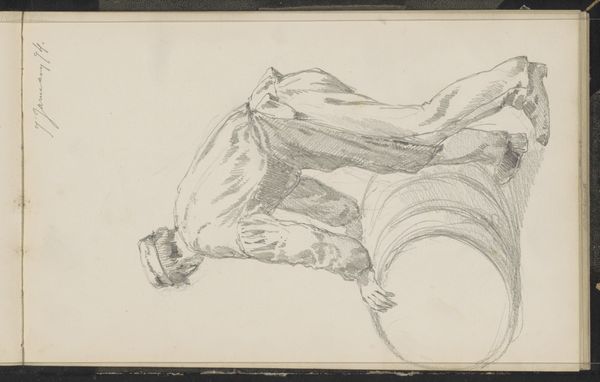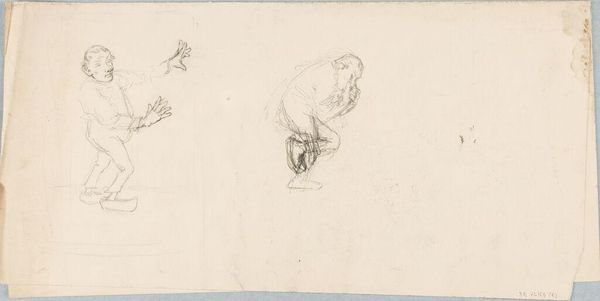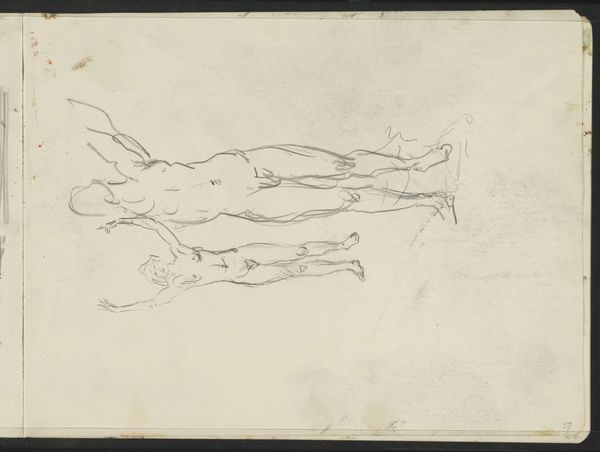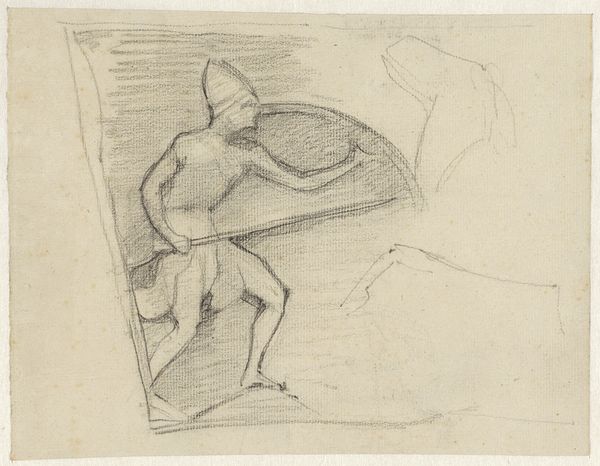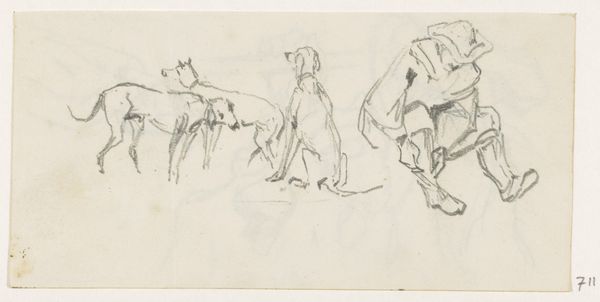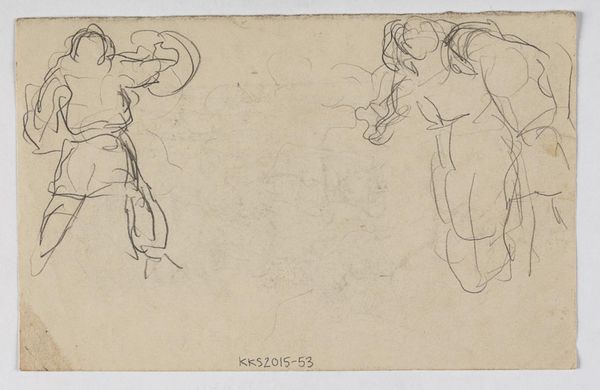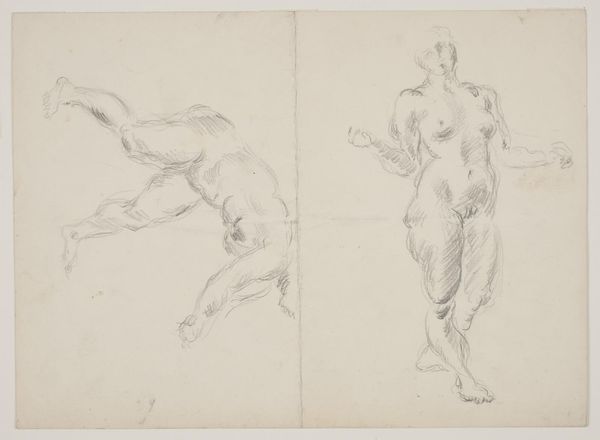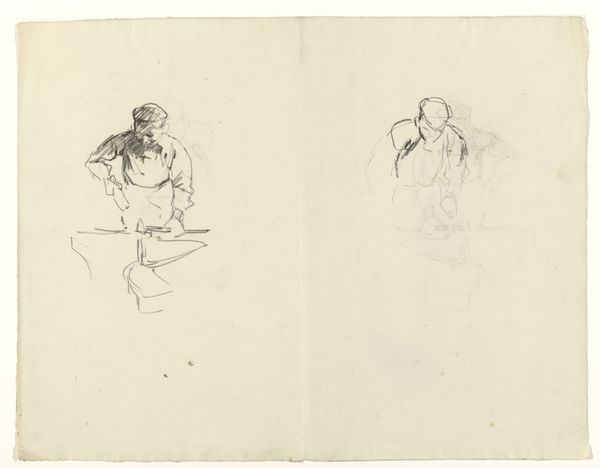
drawing, pencil, pen
drawing
amateur sketch
light pencil work
incomplete sketchy
figuration
11_renaissance
personal sketchbook
sketchwork
ink drawing experimentation
pen-ink sketch
pencil
sketchbook drawing
pen
storyboard and sketchbook work
academic-art
nude
sketchbook art
Dimensions: height 154 mm, width 120 mm, height 156 mm, width 122 mm
Copyright: Rijks Museum: Open Domain
Editor: So, here we have "Kneeling Nude Seen From the Back," a pen and pencil drawing made anonymously sometime between 1645 and 1706. It’s currently in the Rijksmuseum. I find the drawing somewhat unsettling. The kneeling posture combined with the figure being nude and viewed from behind… what do you see in this piece? Curator: Well, the very anonymity of the artist already sparks curiosity. This sketch, born from pen and pencil, invites us to question the power dynamics inherent in the act of observing and representing the human form. Nudity, particularly when depicted from such a perspective, carries historical baggage related to objectification and vulnerability, often gendered. Editor: Gendered how? Curator: Precisely. Consider the male gaze at play here. While we can't definitively know the gender of the artist, representations of nude bodies historically placed women as the primary subject, catering to a male viewer. By presenting this figure – possibly male – in a similarly vulnerable posture, the artwork prompts us to question those ingrained power structures. Whose gaze are we inheriting, and what assumptions come with it? Editor: I never thought about it like that. It seemed more like a study. Curator: Exactly. Artworks like this also expose the systems within artistic training itself. Academic art often normalized the nude, desensitizing both artist and viewer to the implications. Perhaps, this image may provide a vital record of an evolving visual language surrounding class, identity, and representation itself. Do you see those factors at play? Editor: That's fascinating. I’m not sure I agree with everything you say but I'm now more open to considering art from previously unacknowledged critical positions. Thank you. Curator: The pleasure is mine. Art provides avenues to open critical inquiry in hopes of finding new or challenging perceptions, even through just a pencil sketch from hundreds of years ago!
Comments
No comments
Be the first to comment and join the conversation on the ultimate creative platform.



